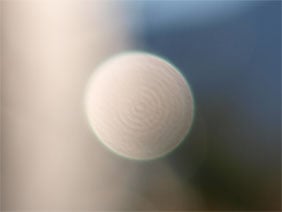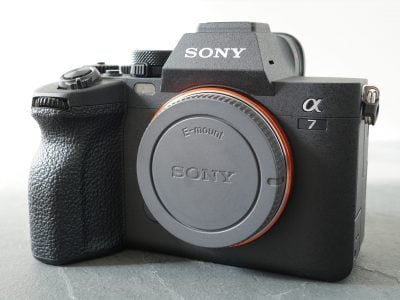Olympus Zuiko Digital 25mm 1:2.8 ‘pancake’
-
-
Written by Gordon Laing
Quality
The Olympus Zuiko Digital 25mm is known as a ‘pancake’ lens for good reason: measuring 64mm in diameter and just 23.5mm thick, it’s the thinnest lens available in the Four Thirds fit. It’s literally dwarfed by any other Four Thirds lens you put next to it, and to illustrate this difference we’ve pictured it below, alongside the older Zuiko Digital 14-45mm kit lens and the premium 12-60mm zoom. Suffice it to say it’s much lighter too: just 95g to the 190, 285 and 575g of the 14-42mm, 14-45mm and 12-60mm lenses respectively.
The Olympus 25mm pancake is an ideal match for the company’s smaller DSLRs, especially the E-4xx series. Fit the lens on an E-4xx and you’ll have yourself a seriously compact kit which could even squeeze into larger coat pockets.
The 25mm is also a good physical match for the E-5xx series, although looks a little small when mounted on the flagship E-3.
The 25mm belongs to the Standard Olympus lens range, alongside the kit zooms, and is built to a similar quality. It’s obviously a lightweight model with mostly plastic construction, but it feels well-built, with a very smooth manual focusing ring and a metal lens mount.
There’s no focus distance markings which seems understandable given the size of the lens, although it’s worth noting Pentax manages to squeeze them onto its 40mm pancake lens which is actually even thinner at an almost unbelievable 15mm.
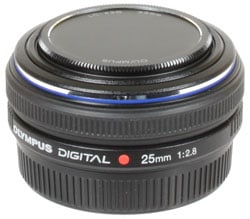 |
Like the Pentax pancake, the lens cap is a screw-on model which at first seems inconvenient compared to a clip-on cap, but before long you can remove and remount it fairly quickly. The filter thread of the Olympus 25mm pancake is 43mm, and the end section doesn’t rotate while focusing. Olympus doesn’t supply a lens hood, but the optional LH-43 model will provide a little shielding.
Internally the optical design consists of five elements in four groups with one aspherical element. The maximum and minimum apertures are f2.8 and f22 respectively with a seven-blade system. An f2.8 aperture isn’t unusual for a prime fixed focal length lens, but it does give the 25mm pancake an advantage over most kit zooms.
| |||
Most kit zooms, including the popular Olympus 14-22mm, start at f3.5 when zoomed-out and end at f5.6 when zoomed-in. This means the 25mm pancake is two thirds of a stop brighter when the kit zoom is at wide angle, and two stops brighter when it’s zoomed-in. This brighter aperture gives it an advantage in low light situations, while also allowing a smaller depth-of-field to be achieved – handy for portrait work.
You can’t have everything on a lens of this size and weight though. While the bokeh (out of focus effect) can look fine on normal photos, patterns of concentric rings can be seen on blurred point sources of light like the reflection of the Sun on rippling water.
You can see a cropped example here taken at f2.8, although to be fair we deliberately pursued this effect rather than finding it had occurred in natural use. Coincidentally, a similar effect was noticed when testing the Olympus 14-42mm and 12-60mm lenses.
Olympus Zuiko Digital 25mm focusing
The Olympus Zuiko Digital 25mm takes approximately one second to focus from its closest focusing distance to infinity using the E-420 body, with an audible motorised whir while doing so. Mounted on the flagship E-3 the focusing felt subjectively a fraction quicker and the tone of the motor a little different, but the experience was very similar to using the lens on the E-420.
As such it’s by no means the quickest or quietest lens in the Olympus range, but equally neither cause a problem and in terms of speed and noise, it’s comparable to most kit zooms. You can hear this focusing in action in our video tour.
A quick note on focusing distance. According to the official specifications, the closest focusing distance is 20cm, although we found we could focus slightly closer – typically down to 17cm between the subject and the focal plane.
The 25mm pancake is one of only three lenses in the current Olympus range which supports the contrast-based auto-focusing mode of the E-420 and E-520 bodies. In order to support this ‘Imager AF’ mode, you’ll need to fit either the 25mm pancake, or the 14-42mm or 40-150mm kit zooms.
Like most For Thirds lenses, the 25mm pancake employs motor-assisted manual focusing. As mentioned above, the manual focusing ring is certainly very smooth and also doesn’t rotate while auto-focusing, although like other motor-assisted lenses, the manual focusing experience can feel a little detached.
If you’re new to the Four Thirds system, you may also find it odd not being able to adjust the focus without first powering-up the camera, and also finding some bodies automatically resetting it to infinity when powering down. It’s all a matter of personal preference and getting used to it though, and won’t cause any surprises to anyone familiar with the Four Thirds system.
Olympus Zuiko Digital 25mm coverageWith the two-times field reduction of the Four Thirds standard, the Zuiko Digital 25mm delivers an equivalent coverage of 50mm. In photographic terms this makes it a ‘standard’ lens that’s suitable for general-purpose use.
If you’re used to zooms and are thinking of using the pancake as your main walk-around lens, there’s understandably some concern of reduced flexibility, but in practice the 50mm equivalent coverage is more usable than you’d think.
So with the 25mm pancake, you can still squeeze in a reasonable landscape shot, while also being able to take a decent portrait with a small depth of field. Indeed as our Gallery sample images page proves, we were able to capture almost exactly the same compositions as a normal 14-42mm zoom by simply adjusting our angle and position. This in turn allows you to explore the shot for better results rather than simply standing still and adjusting the focal length as is often the case with a zoom.
That said, if your position is fixed, a kit zoom will get wider and closer than the 25mm pancake, so to illustrate this in practice, here’s three photos: the first taken with the original 14-45mm kit zoom at 14mm, the second with the 25mm pancake and the third with the 14-45mm zoom, this time at its longest 45mm focal length.
Olympus ZD 14-45mm coverage wide | Olympus ZD 25mm coverage | Olympus ZD 14-45mm coverage tele | ||
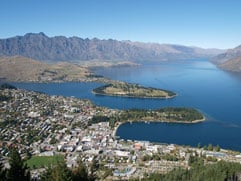 |  |  | ||
| 14-45mm at 14mm, f8 (28mm equivalent) | 25mm at f8 (50mm equivalent) | 14-45mm at 45mm, f8 (90mm equivalent) |
As you can see, the 25mm pancake roughly falls in the middle of the 14-45mm kit zoom range, and while the zoom obviously has a greater focal range at its disposal, be sure to check out our sample images Gallery page to see what’s possible with the 25mm. You may find it’s not only capable of delivering most of the shots you’re after day-to-day, but again makes you think more about your position and angles in terms of the composition.
The bottom line is the 25mm pancake is perfectly usable as a general-purpose lens, and while you may not have the adjustable focal length of a zoom, you will enjoy a brighter aperture than most zooms and better quality too – not to mention the smaller size and weight. None of this will come as any surprise to those who used 35mm film SLRs before zooms became dominant, as almost everyone relied on a 50mm lens for general purpose photography.
Olympus ZD 25mm vs ZD 12-60mm outdoor resolution comparison with E-420
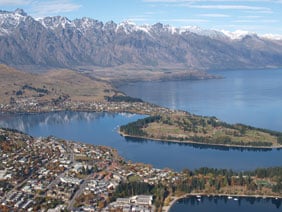 | To compare the real-life performance of the Olympus 25mm pancake lens we shot the same scene with it and the premium ZD 12-60mm kit lens within moments of each other using an Olympus E-420. The 12-60mm was adjusted to match the field of view of the 25mm, and both lenses were set to f8 in Aperture Priority mode.The E-420 recording mode was set to Large Fine with its default settings for tone and noise reduction. The crops are taken from the originals and presented here at 100%. The image left was taken with the Olympus 25mm pancake lens at f8 using the Olympus E-420 body; the original JPEG measured 4.74MB. |
Here the Olympus 25m pancake delivers a good sharp result that’s packed with detail – impressive for an optic that’s physically so compact. Indeed there’s essentially no difference between it and the 12-60mm when you’re comparing the middle portions of each image, as seen in the second row of crops.
Move out towards the edges where many lenses become noticeably softer, and the 25mm pancake still holds it together pretty well. The main difference between it and the 12-60mm though concerns coloured fringing. Most obviously in the first row of crops, taken from the top left corner, there’s some coloured fringing on the 25mm crop which isn’t visible on the 12-60mm sample.
A little coloured fringing is also visible on the edges of objects and buildings in the third and fourth row of crops. Again this is absent on the 12-60mm, and allows its details to look better defined.
So the Zuiko Digital 12-60mm is optically superior in this respect, but it is of course a premium model that’s bigger, heavier and more expensive. Apart from a little coloured fringing towards the corners, we’d say the 25mm pancake performs very well across the frame, and fulfils its purpose as an all-round compact prime lens with little optical compromise. Now let’s see how it measures-up in terms of studio resolution.
Olympus Zuiko Digital 25mm with Olympus E-420 | Olympus Zuiko Digital 12-60mm with Olympus E-420 | |
 |  | |
f8, 100 ISO | f8, 100 ISO | |
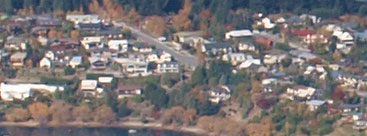 | 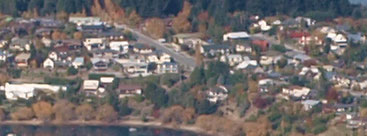 | |
f8, 100 ISO | f8, 100 ISO | |
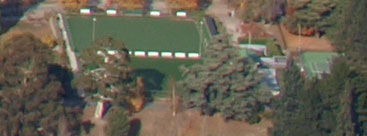 | 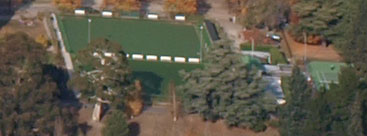 | |
f8, 100 ISO | f8, 100 ISO | |
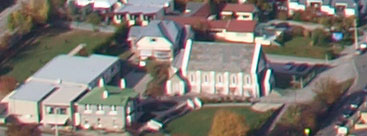 | 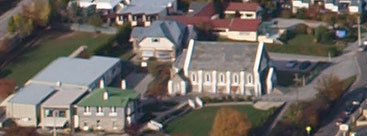 | |
f8, 100 ISO | f8, 100 ISO |
Olympus ZD 25mm resolution, tested with Olympus E-420
 | To measure and compare the Olympus 25mm’s resolving power we photographed the Enhanced Digital Camera Resolution Chart with it and a number of lens / camera combinations, each using their best quality JPEG and default image tone and sharpening settings. Each lens was tested at every aperture and the sharpest result selected. We tested the Olympus 25mm with an Olympus E-420.The crops are taken from the original images, saved as High Quality JPEGs in Photoshop CS2 and presented here at 100%. Each number represents 100 lines per picture height (lpph), so a figure of 20 means a resolution of 2000 lpph. |
| Fitted on an Olympus E-420 the 25mm pancake delivers 2150 and 2200 lpph of horizontal and vertical resolution respectively; we expect this result to be identical to what you’d get with the E-520. Fit the premium 12-60mm zoom, and you’ll eek out a fraction more resolution from the camera, but nothing that you’d notice in real-life. So here, the 25mm pancake appears to be mostly limited by the 10 Megapixel resolution of current Four Thirds bodies. Now let’s see how the lens performs in our corner sharpness test under the same studio conditions. |
Olympus ZD 25mm with E-420 | Olympus ZD 12-60mm with E-420 | |
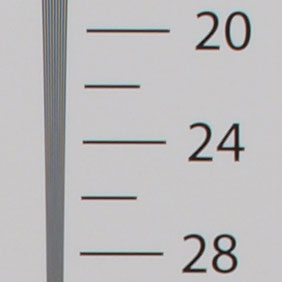 | 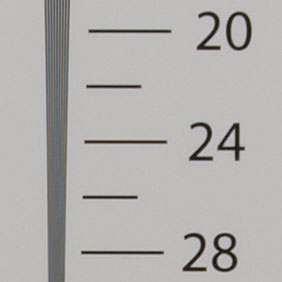 | |
2150 lpph, ZD 25mm, f8, 100 ISO | 2175 lpph, ZD 12-60mm at 25mm, f8, 100 ISO | |
Olympus ZD 14-42mm with E-410 | Leica 14-50mm with E-400 | |
 | 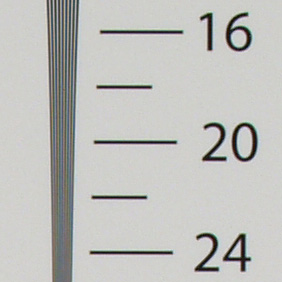 | |
2150 lpph, 14-42mm at 25mm, f8, 100 ISO | 2100 lpph, 14-50mm at 25mm, f8, 100 ISO |
Olympus ZD 25mm with E-420 | Olympus ZD 12-60mm with E-420 | |
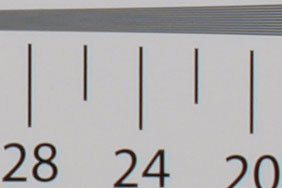 | 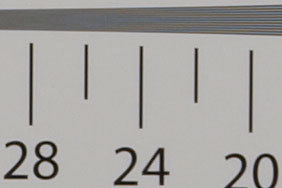 | |
2200 lpph, ZD 25mm, f8, 100 ISO | 2200 lpph, ZD 12-60mm at 25mm, f8, 100 ISO | |
Olympus ZD 14-42mm with E-410 | Leica 14-50mm with E-400 | |
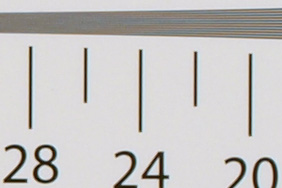 | 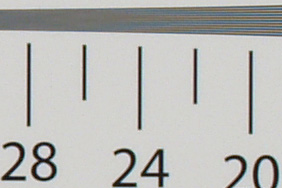 | |
2150 lpph, 14-42mm at 25mm, f8, 100 ISO | 2100 lpph, 14-50mm at 25mm, f8, 100 ISO |
Olympus ZD 25mm corner sharpness
 | To compare corner sharpness we photographed the Enhanced Digital Camera Resolution Chart with a variety of Four Thirds lenses, including the 25mm pancake, the 50mm macro and the latest Olympus kit zoom at its widest and longest focal length.Each lens was tested with various apertures using Aperture Priority mode. The crops are taken from the lower left corner of the chart and presented here at 100%. |
| The Olympus 25mm lens exhibits a little coloured fringing in the extreme corners throughout its aperture range – this is apparent in all three samples below, although in the first with the aperture wide open at f2.8, the vignetting is masking some of the effect. Judging from our other tests, this fringing appears to be the biggest optical issue with the 25mm pancake lens, and it’s a shame you can’t completely eliminate it by stopping-down the aperture. To see how it impacts a real-life situation, see our first outdoor results page. Otherwise, let’s continue with the results on our fringing and macro page. |
Olympus ZD 25mm | Olympus ZD ED 50mm | Olympus ZD 14-42mm ED | Olympus ZD 14-42mm ED | |||
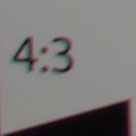 | 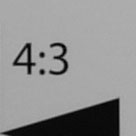 | 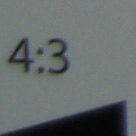 | 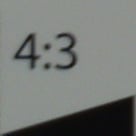 | |||
25mm at f2.8 | 50mm at f2 | 14-42mm at 14mm f3.5 | 14-42mm at 42mm f5.6 | |||
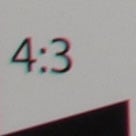 | 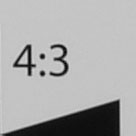 | 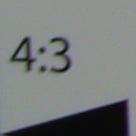 | 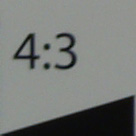 | |||
25mm at f8 | 50mm at f8 | 14-42mm at 14mm f8 | 14-42mm at 42mm f8 | |||
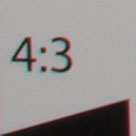 | 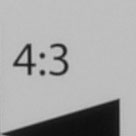 | 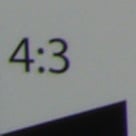 | 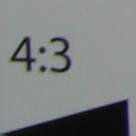 | |||
25mm at f16 | 50mm at f16 | 14-42mm at 14mm f16 | 14-42mm at 42mm f16 |
Olympus ZD 25mm colour fringing comparison
 | To measure colour fringing caused by lens chromatic aberrations and sensor blooming, we photographed a test chart, left, with areas of very high contrast.We tested each lens with the aperture wide open in Aperture Priority mode. The crops are taken from the upper left corner of the chart and presented here at 100%. |
| All four lenses exhibited some fringing in their extreme corners, although the 14-42mm kit zoom keeps it better under control when zoomed-in. You can also see a little coloured fringing in the corners with the 25mm in our outdoor results. |
Olympus ZD 25mm | Olympus ZD ED 50mm | Olympus ZD 14-42mm | Olympus ZD 14-42mm | |||
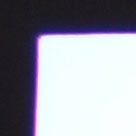 | 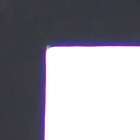 | 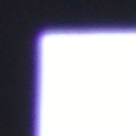 |  | |||
25mm at f2.8 | 50mm at f2 | 14-42mm at 14mm f3.5 | 14-42mm at 42mm f5.6 |
Olympus ZD 25mm macro comparison
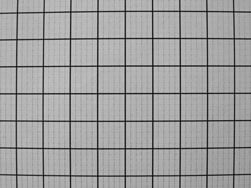 | To measure and compare the Olympus 25mm’s macro performance we photographed a custom chart using it and a number of rival lenses. The camera was positioned at a distance which delivered the maximum possible reproduction while maintaining sharp focus. The dark lines are 10mm apart and the result is not cropped. Smaller areas are preferred in this test. The image left was taken with the Olympus 25mm pancake. | |
| 25mm at f8 Max area of 92x69mm | ||
| The 25mm pancake doesn’t pretend to be a macro lens, but delivers a modest result even compared to kit zooms. The best we managed from it was an area measuring 92x69mm, which is comfortably less than either the 12-60mm or the 14-42mm kit lens; the pancake’s result also shows some geometric barrel distortion. The winner here though is unsurprisingly the Zuiko Digital 50mm, a dedicated macro lens which can deliver an impressive area measuring just 34x26mm. Now let’s take a look at how the pancake performs in terms of geometric distortion. |
Olympus ZD ED 50mm | Olympus ZD ED 14-42mm | Olympus ZD 12-60mm | ||
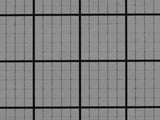 | 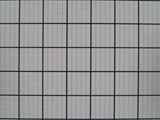 | 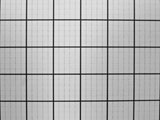 | ||
| 50mm at f8 Max area of 34x26mm | 14-42mm at 42mm f8 Max area of 68x50mm | 12-60mm at 60mm f8 Max area of 58x44mm |
Olympus ZD 25mm uniformity comparison
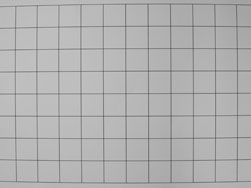 | To measure and compare the Olympus 25mm’s geometric distortion we photographed a test chart consisting of a grid pattern, using it and a number of rival lenses. Here are the results for each lens. The images were analysed with Imatest using 5th Order line calculation and the full areas presented here at a reduced resolution. | |
| 25mm at f8 Distortion: 1.52% barrel | ||
| The image above was taken with the Olympus 25mm lens. Barrel distortion was measured at 1.52% which is roughly in-between the two scores shown for the 14-42mm kit zoom at its widest and longest focal lengths; as such the pancake exhibits approximately the same distortion as the kit zoom at the same 25mm focal length. So average performance there, but it’s worth noting that while the 50mm appears to deliver a much less distorted result with 0.49%, this lens is actually beaten by the kit zoom in this test when it’s at 42mm. Now let’s see how the 25mm measures-up in our light fall-off tests. |
Olympus ZD ED 50mm | Olympus ZD ED 14-42mm | Olympus ZD ED 14-42mm | ||
 | 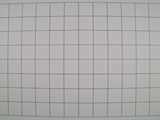 | 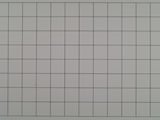 | ||
| 50mm at f8 Distortion: 0.49% barrel | 14-42mm at 14mm f8 Distortion: 2.97% barrel | 14-42mm at 42mm f8 Distortion: 0.21% barrel |
Olympus ZD 25mm uniformity comparison
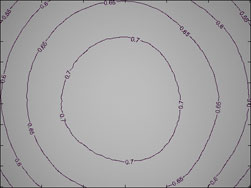 | To measure and compare the Olympus 25mm’s vignetting and light fall-off we photographed a white target with a highly diffused custom filter using it and a number of rival lenses. Here are the results for each lens with its aperture fully open and the focus set to infinity. The images were analysed with Imatest and the full areas presented here at a reduced resolution. Bigger percentages are better. | |
| 25mm at f2.8 Mean corner fall-off: 81.3% | ||
| The image above was taken with the Olympus 25mm lens with its aperture wide open. Here the light falls off in the corners to an average of 81.3% of the centre measurement. This is better than either score we measured for the 14-42mm kit zoom, although once zoomed-in, the 14-42mm comes close. The pancake’s score is only fractionally better than the 50mm macro here, but its gradient shows a more gentle fall-off towards the corners which would be less obvious. So a good result here to end on for the pancake. Now let’s see some real-life examples in our 25mm sample images gallery. |
Olympus ZD ED 50mm | Olympus ZD ED 14-42mm | Olympus ZD ED 14-42mm | ||
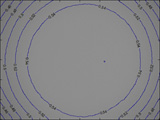 | 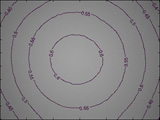 | 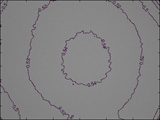 | ||
| 50mm at f2 Mean corner fall-off: 78.6% | 14-42mm at 14mm f3.5 Mean corner fall-off: 63.6% | 14-42mm at 42mm f5.6 Mean corner fall-off: 85.7% |
